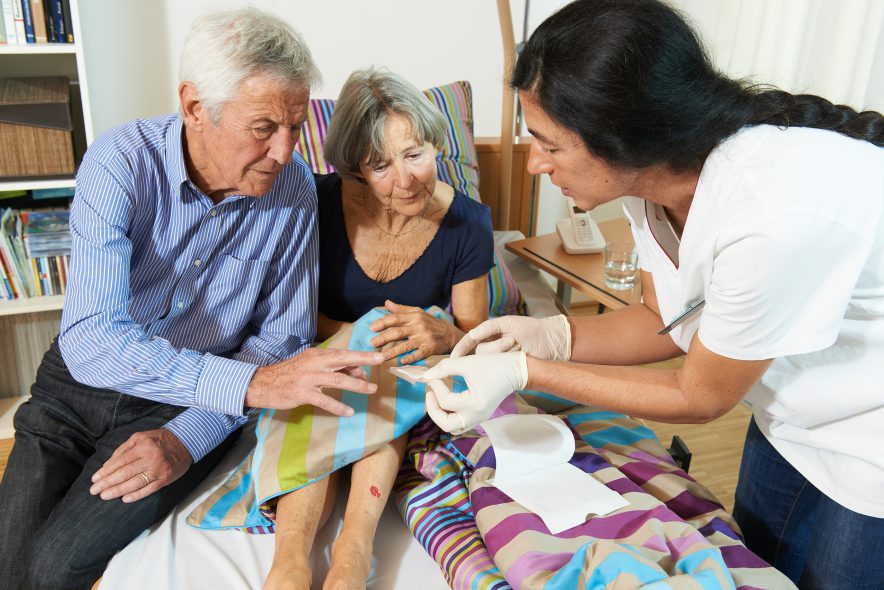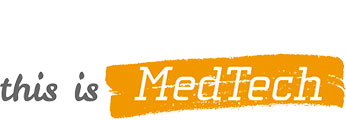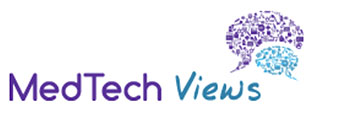Care Outside of Hospital
The MedTech industry develops products that facilitate the delivery of health services in the primary care setting and in people’s homes. These technologies save lives, are convenient for patients and make efficient use of healthcare resources.
‘Community care’ has no hard and fast definition. However, what it means in practical terms is the decentralisation of care, shifting it away from hospitals and bringing it closer to primary care.
Patients can be treated in settings such as their local general practitioner or at home, by encouraging out-patient ambulatory care and using facilities like day-care units or local clinics.
For the elderly and disabled, accessing services locally is more convenient than travelling to hospitals for outpatient appointments or being admitted to hospital. When it comes to monitoring, telemedicine allows people to preserve their independence while wireless technologies securely share health data with their healthcare team.
Delivering efficiency
Europe’s ageing population means that more people will require care. Now, more than ever, it is essential to find ways to make the most efficient use of healthcare resources.
Technology can help. Hospitalisation is unavoidable for people with acute illnesses or in need of surgery. Many chronic conditions, however, can be managed just as well in the community.
Inpatient hospital care is expensive. Research shows that many older people are admitted to hospital inappropriately and stay longer than necessary. As institutional care can cost 10 times as much as home care, it is clear that community care is preferable where appropriate.
Industry view:
“Together, we need to be courageous and smarter about how we use the resources we have and to direct them towards models of care that can deliver a demonstrable positive return on investment in healthy life years for citizens.” – Contract for a Healthy Future
The medical technology industry continues to develop products that enable people to better manage their disease or health condition themselves and minimise their use of hospital care. This can be empowering for patients, providing them with flexibility and choice.
Unlocking potential
The medical technology sector is committed to playing its part in the collective effort required to restructure our health services. By facilitating community care, the industry provides smarter alternatives to the traditional model of locking up resources in bricks and mortar.
Many of these technologies are new. They have the potential to change patient care, yet health systems tend to evolve slowly. Realising their full benefits will mean investing in the infrastructure that will deliver effective community care, including public awareness. This will provide a further step towards sustainable, cost-effective healthcare systems.
Breaking down silo budgeting structures for the treatment of people with chronic conditions can help ensure patients receive consistent, high-quality care across all care settings. Payers need to move towards paying for an ‘episode of care’ rather than paying based on the site of care.
- Read more about position on Community Care
Community care is diverse sector
Wound Care
A wound is an injury, such as a cut or tear, to a part of the body. Usually these are external, and are known as ‘open’ wounds. However wounds can also be ‘closed’, for example bruises, with no external damage to the skin. Different kinds of wounds may be treated in different fashions, depending upon the cause and how serious they are. The treatment of such injuries is known as wound care, and has been practiced since prehistory.
The medical technology industry has continued to advance the science of wound care and wound management. The introduction in the 1950s of synthetic fibres such as nylon, polyethylene and polyvinyls helped significantly accelerate natural wound healing processes. This was followed by “wet” polymer dressings, and research in the 1990s led to improvements in composite and hybrid polymers which further expanded the number of materials available for wound dressings.
The industry has developed increasingly specialised techniques for dealing with different types of wounds. For example, the treatment of burns has been revolutionised by advances in technology, and the number of people dying from burns has decreased significantly. The use of skin grafts and tissue engineering has changed the management and the outcomes for severe burns victims.
Good wound management can help to accelerate healing, reduce the impact on patients and break the cycle of repeat hospitalisation. Wound care can be provided in a community setting, including in patients’ own homes.
For example, transportable Negative Pressure Wound Therapy (NPWT) devices allow patients to return home to manage chronic wounds and heal faster. Because patients can be shown how to apply NPWT themselves, this technology empowers patients to play an active role in their healing and improves patient wellbeing.
Home Dialysis
Chronic kidney diseases (CKD) are typically caused by diabetes, hypertension and inflammatory diseases of the kidney. Left undiagnosed or untreated, CKD can cause total kidney failure (end-stage renal disease – ESRD) which is treatable only by dialysis or transplantation, i.e. Renal Replacement Therapy (RRT).
For medical reasons, most dialysis patients are not suitable for transplantation and due to the limited availability of donor kidneys, the majority of patients with ESRD require dialysis therapy for the remainder of their lives. Thanks to innovation and supportive care systems, there are now different methods to perform dialysis, and even the opportunity to receive treatment at home (e.g. during night or continuously during day), contributing to quality of life and well-being of patients.
Hemodialysis is a treatment method where patient’s blood flows outside of the body through disposable bloodlines into a special filter, the dialyzer. Peritoneal dialysis, is a blood purification method using the patient’s peritoneum, i.e. the tissue that forms the lining of the abdominal cavity.
Of the 552,000 kidney failure patients in Europe in 2013, 62% were treated with dialysis. It is estimated that the number of people with kidney failure will increase to around 650,000 by 2020, putting enormous pressure on hospital services and budgets.
For patients, making several trips per week to a dialysis clinic is a considerable inconvenience and impacts greatly on their quality of life. But there is an alternative. Home dialysis cleans the blood in a way that kidneys would but gives patients greater flexibility about when to undergo dialysis.
Not only does this keep patients alive, it offers the freedom to pursue work, study and family life.
Ostomy Care
Around 700,000 people in the European Union have an ostomy, an artificial opening in the abdomen to allow for the elimination of waste. The majority of ostomies are permanent and require care to minimise the risk of infection, hospitalisation and even death.
Ostomy surgery saves lives and quality after-care allows people to continue playing an active role in their families, communities and the workplace. Still, ostomies are prone to complications because exposure to bodily waste can irritate the skin and cause infection.
Inadequate ostomy care is a significant burden for people affected and for the healthcare system. Around one third of patients who have colon surgery (colostomy) and up to two thirds of patients who have urinary system surgery (urostomy) and small intestine surgery (ileostomy) are affected by skin complications.
Patients often suffer from skin problems in silence because of the stigma that surrounds ostomy care – few people want to discuss digestion, bodily waste or skin disorders. One study has shown that only 38% of patients diagnosed with a skin disorder recognised that they had a medical problem, and more than 80% of patients with skin disorders did not seek professional healthcare.
This can be reduced with a little innovation: modern ostomy products are personalised and fit individual patients and their body types. They help to reduce the risk of complications, and also reduce the need for hospital care by allowing services to be provided elsewhere, like at home.
People who need ostomy surgery often require care for the rest of their lives. This is why they value tailored ostomy bags that are more personalised, fit properly and do not irritate their skin. It provides a better quality-of-life and allows patients to live their lives normally and in dignity. Getting ostomy care right is good for patients; good for everyone.
- Access to Ostomy Supplies and Innovation: Guiding Principles for European Payers Background paper
- Position Paper on Access to Ostomy Supplies and Innovation
Incontinence Care
Incontinence is one of healthcare’s great taboos. European studies estimate that between 4% and 8% of the total population are affected but the subject is rarely discussed. Incontinence is often associated with older people but can affect people of any age.
The estimated prevalence of urinary incontinence in middle-aged and older women in the general population appears to be in the range of 30% to 60% and the percentage increases with age. One quarter of young women, half of middle-aged and postmenopausal women, and three quarters of elderly females in nursing homes, experienced some degree of involuntary urine loss.
People with continence issues often suffer in silence. Incontinence has been linked to social isolation, depression and lost workplace absenteeism. Those affected may be unaware of innovative products such as incontinence pads, catheters and bladder installations that can allow people to maintain their dignity and confidence.
These products empower patients to manage their own condition with minimum recourse to hospital care. This delivers freedom to live a normal and full life, playing an active role in the workplace, family and the community.
e-Health and Telemonitoring
Modern health systems are embracing information technology in ways that can make services more convenient for patients. This also has efficiency benefits for the health systems as a whole.
eHealth is the use of Information and Communication Technology (ICT) tools and services in health and healthcare delivery. Such tools and services are increasingly used by both healthcare professionals and patients, and are playing a significant role in improving the health of European citizens, changing how they manage their health and receive their healthcare services.
Innovations powered by eHealth have huge potential to improve the quality and productivity of healthcare systems, and can help deliver equitable access to safer, more user-friendly services for Europe’s citizens. Given the pressures caused by an increasing incidence of chronic conditions and the demographic challenges of an ageing population, these improvements and efficiencies will be vitally important.
For example, technology can now facilitate remote monitoring of cardiac implantable electronic device (CIED) in patients with heart failure. These life-saving devices – which include pacemakers and defibrillators – deliver tiny electric pulses that help to control irregular heartbeats.
According to medical guidelines, patients with pacemakers should be followed up every three to 12 months and those with a cardiac defibrillator need to be checked every three to six months. This is to ensure that there are no new problems with the heart and that the device is working properly.
For patients, it means regular visits to the clinic for routine check-ups and, if their symptoms worsen in between appointments, it can require emergency care.
There is an alternative. Modern CIEDs can be monitored remotely and on a 24-hour basis. The new generation of pacemakers automatically sends information wirelessly so that doctors can securely check patients’ hearts from anywhere at any time. If there is a problem, they can intervene without waiting until the next scheduled appointment – by which time the patient’s condition may have worsened further.
This can save lives, and saves hospital resources, time and money. Remote monitoring would have seemed like science fiction in the 20th century but in a world of smart phones and smart TVs, smarter medical devices are a natural step forward.
Asthma care is also being revolutionised. It is now possible to track asthma medication use in real time by using sensors attached to an inhaler. The sensors automatically capture the time and location that an inhaler is used. This data is shared with mobile devices via Bluetooth technology.
This system allows patients and their doctors to use mobile applications to monitor asthma control and adhere to the medication and quickly adjust, if necessary. A study has shown that patients using this kind of system experience fewer symptoms, better quality-of-life and better lung function compared to those monitored using traditional methods. This opens the door to a more responsive, dynamic care; better for patients, better for society.
Posted on 27.07.2015



